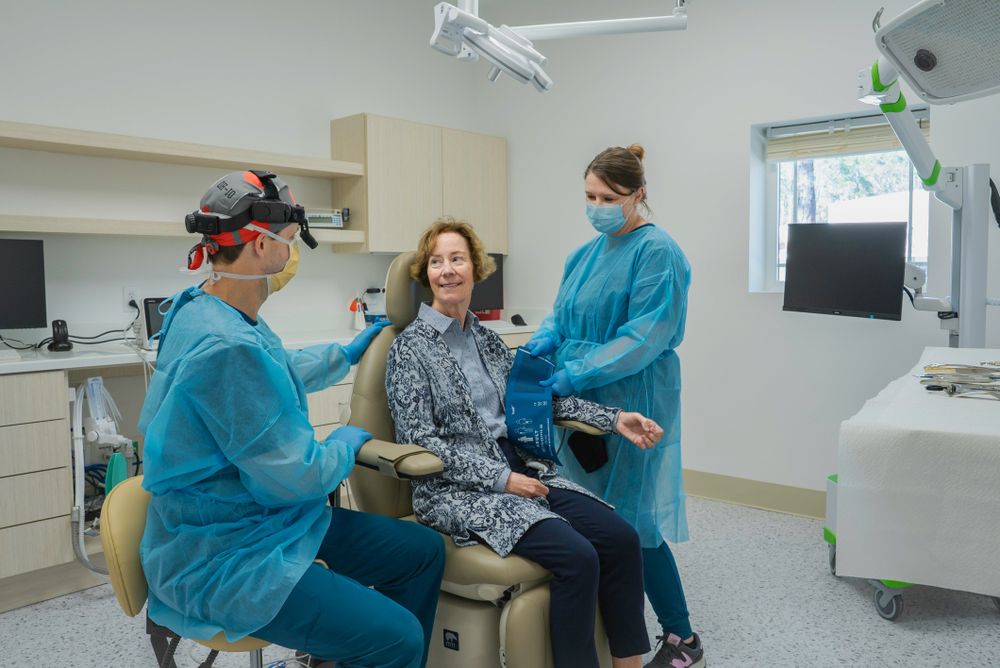Patients expect the same level of convenience from their healthcare providers that they receive from restaurants, airlines, or even their favorite fitness apps. If booking a haircut or ordering groceries can be done in seconds, why should scheduling a doctor’s appointment still involve long phone calls and waiting on hold?
The answer is simple: it shouldn’t. That’s why clinics everywhere are embracing patient self scheduling software — a tool that allows patients to book, reschedule, or cancel appointments on their own terms.
Beyond convenience, online patient self scheduling plays a surprising role in improving retention rates. When patients have control, they’re more likely to stay loyal to your clinic and actively engage in their care.
What Is Patient Self Scheduling Software?
Patient self scheduling software is a type of digital tool that empowers patients to manage their own appointments online. Through a clinic’s website, app, or patient portal, individuals can:
- View real-time availability.
- Choose preferred providers and services.
- Book or adjust appointments without calling the front desk.
- Receive automated confirmations and reminders.
It’s a modern, patient-first approach to scheduling that benefits both patients and providers.
Benefits of Patient Self Scheduling Software
Reduced No-Shows with Patient Self-Scheduling
One of the most compelling advantages of patient self-scheduling is its potential to reduce missed appointments (no-shows), which translates into cost savings and better utilization of provider time.
A case study conducted at a multi-site physician group affiliated with Johns Hopkins evaluated nearly 2 million appointment transactions between 2019 and 2021. The study found that:
- Patients who made appointments via the patient self scheduling software were less likely to miss their appointment.
- While missed appointments declined, the appointment cancellation rate was actually higher for those who used online patient self scheduling.
These findings suggest that patient self scheduling software not only lowers the burden of no-shows, but also shifts patient behavior toward more active engagement (through canceling or rescheduling rather than simply failing to show). For medical practices, self-scheduling and patient engagement software can lead to fewer wasted slots, reduced administrative overhead chasing no-shows, and better resource allocation.
Patient Self Scheduling Success at Kensington Medical Clinic
Kensington Medical Clinic adopted Cortico’s patient self scheduling software and saw dramatic results. Before implementing Cortico, staff fielded around 800 phone calls every day — most of them for routine appointment booking. After the rollout, that number dropped to zero.
This change freed up hours of staff time daily, allowing medical office assistants to focus on higher-value patient care and administrative tasks rather than managing the phones. For patients, the result was easier access to care and a smoother booking experience.
KMC isn’t unique. Medical practices everywhere can reclaim staff time and improve patient access with Cortico. Book a demo to see how.
Why Retention Rates Matter for Medical Practices
Patient retention is the lifeblood of any healthcare practice. Attracting new patients is important, but retaining existing patients is always more cost-effective than acquiring new ones. Loyal patients:
- Return for preventive visits and follow-ups.
- Recommend your clinic to family and friends.
- Trust providers with long-term care needs.
If patients find booking inconvenient or unreliable, they’re more likely to switch providers. Online patient self-scheduling removes that friction and makes it easy for patients to keep coming back.
How Patient Self Scheduling Software Improves Retention Rates
1. Convenience of Patient Self Scheduling Builds Loyalty
Patients want flexibility. With online patient self scheduling available 24/7, they can book appointments at any time — whether it’s during a lunch break, late at night, or on weekends. This level of convenience makes patients feel valued and respected, increasing their loyalty to the clinic.
2. Reduced No-Shows Strengthen Engagement
Missed appointments disrupt both care plans and clinic efficiency. Patient self-scheduling, combined with automated reminders, significantly reduces no-shows. Patients can easily reschedule if conflicts arise, keeping them engaged rather than dropping off completely.
3. Empowerment Enhances Patient Experience
Self scheduling for patients enables individuals to manage bookings all on their own, making them feel in control of their healthcare journey. This empowerment leads to higher satisfaction, which directly influences whether they return to the same clinic for future care.
4. Improved Access Increases Trust
Long phone wait times or limited office hours can frustrate patients and prompt them to seek alternatives at competitors. Online patient self scheduling provides immediate access, enabling patients to secure the care they need without stress. Consistent accessibility builds trust — and trust drives retention.
5. Seamless Multichannel Care
Today’s healthcare doesn’t happen only in person. Patient self-scheduling tools that integrate telehealth options make it easy for patients to book both physical and virtual visits. This seamless experience ensures patients remain connected to your clinic regardless of how they choose to engage.
6. Better Data, Better Relationships
Patient self scheduling software often collects valuable data on booking patterns and patient preferences. Clinics can use this information to personalize outreach, anticipate needs, and provide proactive care. Patients who feel understood and cared for are far more likely to stay long-term.
Patient Perspective: Why They Prefer Self-Scheduling
Time savings: No more waiting on hold.
Control: Choose the provider, time, and type of appointment.
Transparency: View available slots instantly.
Reminders: Receive updates that prevent missed visits.
Confidence: Know that their booking is confirmed and secure.
These advantages add up to a more satisfying healthcare experience, the foundation of patient retention.
Provider Perspective: Why Clinics Love It
From the provider side, patient self scheduling software helps medical practices:
- Reduce call volume and administrative burden.
- Fill last-minute cancellations faster.
- Improve resource allocation with real-time scheduling.
- Streamline and automate patient intake processes.
Ultimately, this leads to a more efficient practice, happier staff, and stronger patient loyalty.
The Role of Patient Self Scheduling Software in Preventive Healthcare
Retention isn’t just about patients coming back when they’re sick — it’s about keeping them engaged with preventive care.
Patient self scheduling makes it easy to book routine check-ups, screenings, and follow-ups.
Patients are less likely to skip preventive visits when booking is hassle-free, which improves outcomes and deepens clinic-patient relationships.
The Future of Patient Self Scheduling Software
In the coming years, expect patient self scheduling software to become even smarter with:
AI-driven recommendations, suggesting best appointment times based on history and availability.
Voice-enabled booking, allowing patients to schedule through smart assistants like Alexa.
Integration with wearables, syncing wellness data to recommend preventive appointments.
These evolutions in patient self scheduling will further strengthen patient retention by creating a truly connected healthcare journey.
Cortico’s Patient Self Scheduling Software
Cortico is a leading provider of patient self scheduling software for medical practices and clinics in Canada and the USA.
On top of patient self-scheduling, Cortico also includes automated SMS and email appointment reminders, payment processing tools, and customizable patient intake forms – all of which integrate seamlessly with popular electronic medical record systems (EMRs).
To see how Cortico can help your practice offer self scheduling for patients, contact us to book a demo today.








